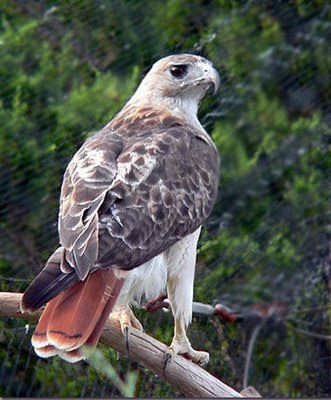The year before the first bird walk (1995) we had 9 nesting pair of bluebirds and a fledgling count of 52! (Incidentally, since first placing the nest boxes we’ve had a total of nearly 250 bluebird fledglings!) This success excited me and many members as well, but one member in particular was especially thrilled. He unfortunately is no long with us, but his passion for birds has led to our Annual SCC Bird Walk. The person I refer to is Dick ‘Judge’ Merrick.
‘Judge’ kept tabs with me nearly every day on our bluebird count, asking me what kind of birds I was seeing on the course and informing me of any unusual species he had sighted. I learned many things about birds and their behavior from the ‘Judge’, and he largely is responsible for my interest and enjoyment that I experience to this day.
So, in 1995, with our bluebird population rising, and many other interesting species inhabiting the course (or at least foraging throughout), the ‘Judge’ thought that other bird enthusiasts (as well as some potential recruits) might enjoy these birds, and suggested we have a Bird Walk. The following spring, the first Bird Walk was held, and the Monday event was preceded by a very interesting and informative Sunday afternoon slide show, of birds we would likely see, by ‘Judge’ Merrick’s wife, Margot Merrick.
That’s a little history of how the Bird Walk came to fruition and a bit of information about our efforts to help perpetuate Eastern Bluebirds.
I’ll write more about this beautiful species and other resident species in future blogs, but for now this year’s event recap follows.
About 20 people attended Margot’s slide show and the first Bird Walk. That number has steadily increased to what I believe was our largest attendance last Monday, of 42. It was actually the first time we had more participants than we had bird species counted. In past years, we’ve had species counts in the mid 50’s to 60 plus range, but this year our count was surprisingly low at only 41.
Perhaps it was the cool, cloudy day that accounted for the low species total. In spite of this we saw some very colorful species, and the group was once again treated to the very knowledgeable and educational birders, Lynne Carpenter and Barbara Brown. These two ladies can easily identify all of the species we’re likely to see, as well as recognize them by just hearing their chirps or song! We are indeed fortunate to have them here every year, as well as members, Roger Miller and Char Delaney, whom organize the annual event.
‘Judge’ kept tabs with me nearly every day on our bluebird count, asking me what kind of birds I was seeing on the course and informing me of any unusual species he had sighted. I learned many things about birds and their behavior from the ‘Judge’, and he largely is responsible for my interest and enjoyment that I experience to this day.
So, in 1995, with our bluebird population rising, and many other interesting species inhabiting the course (or at least foraging throughout), the ‘Judge’ thought that other bird enthusiasts (as well as some potential recruits) might enjoy these birds, and suggested we have a Bird Walk. The following spring, the first Bird Walk was held, and the Monday event was preceded by a very interesting and informative Sunday afternoon slide show, of birds we would likely see, by ‘Judge’ Merrick’s wife, Margot Merrick.
That’s a little history of how the Bird Walk came to fruition and a bit of information about our efforts to help perpetuate Eastern Bluebirds.
I’ll write more about this beautiful species and other resident species in future blogs, but for now this year’s event recap follows.
About 20 people attended Margot’s slide show and the first Bird Walk. That number has steadily increased to what I believe was our largest attendance last Monday, of 42. It was actually the first time we had more participants than we had bird species counted. In past years, we’ve had species counts in the mid 50’s to 60 plus range, but this year our count was surprisingly low at only 41.
Perhaps it was the cool, cloudy day that accounted for the low species total. In spite of this we saw some very colorful species, and the group was once again treated to the very knowledgeable and educational birders, Lynne Carpenter and Barbara Brown. These two ladies can easily identify all of the species we’re likely to see, as well as recognize them by just hearing their chirps or song! We are indeed fortunate to have them here every year, as well as members, Roger Miller and Char Delaney, whom organize the annual event.
This year's species list on Monday, May 11th was:


A few of the more strikingly colorful species are shown here in this post, but if you look carefully as you play the course you’ll possibly see these and many more. When you’re out on the course playing toward the 7th green and walking off the 8th tee, be sure to check out the Red-tailed Hawks nest in the large elm tree on the right , just before beginning of 8th fairway. It appears as though eggs are being incubated and it shouldn’t be long before we see nestlings. This has been a very popular nest over the past few years. Two years ago there were Great–horned Owls nesting in February, followed by Red-tailed Hawks in the spring. And now this year we have Red-tailed Hawks again. Should be fun to watch the fledgling(s) this summer!

Blackburnian Wabler

Yellow Warbler






















